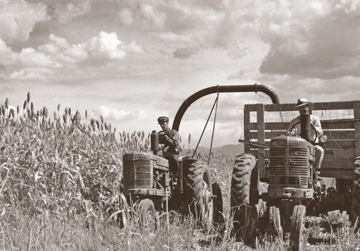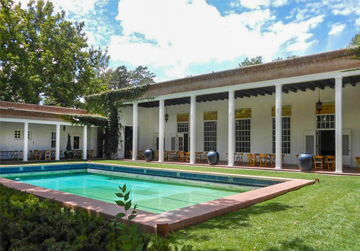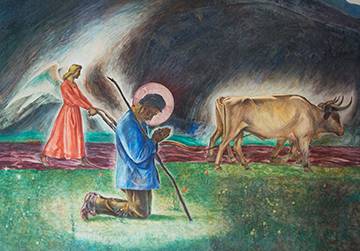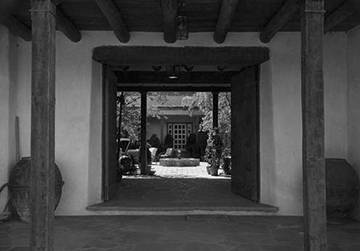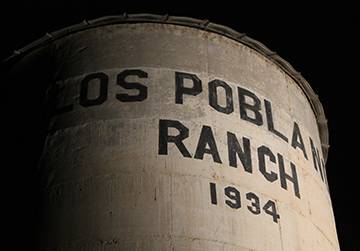History of Los Poblanos
The Los Poblanos land was originally inhabited by the Ancestral Pueblo Indians in the 14th century. Many of the original settlers in this area were thought to have come from Puebla, Mexico, a citizen of which is called a “Poblano.” The land became part of the Elena Gallegos land grant around 1716. The original ranch land was owned by Ambrosio and Juan Cristobal Armijo through the 19th century but was reassembled by Albert and Ruth Simms in the 1930s. Los Poblanos today encompasses the original headquarters of the 800-acre ranch that extended to the crest of the Sandia Mountains, owned by Albert Simms and Ruth Hanna McCormick Simms. Our historic inn was their private residence and the center of operations of their dairy, farming, nursery, art businesses and dynamic cultural and educational endeavors. In 1932, Ruth Hanna McCormick Simms commissioned architect John Gaw Meem and numerous WPA artists and craftsmen to renovate the ranch house and create the La Quinta Cultural Center for political and community events and recreation with gardens designed by Rose Greely.
Culture & Education
La Quinta Cultural Center was designed and used for civil, social and cultural purposes. The art gallery held frequent exhibitions, which were open to the public. The ballroom and catering kitchen were designed to host meetings, lectures and concerts for up to 200 people. It was the original home to the June Music Festival and boasted the first swimming pool in Albuquerque, complete with men’s and women’s changing rooms painted by Paul Lantz. A lecture series began in 1937, where Thornton Wilder, Rockwell Kent, Elmer Rice, and Paul Horgan were some of the speakers.
Using La Quinta as headquarters for their cultural and educational endeavors, Ruth and Albert Simms founded Manzano Day School, Sandia Prep, Albuquerque Academy and Albuquerque Little Theater. The impact these institutions have had on New Mexico is immeasurable.
Agriculture
Los Poblanos was a model experimental farm in the 1930s and 1940s. It was home to the original Creamland Dairies, and supplied Albuquerque with a considerable portion of its milk. It boasted one of the finest purebred herds of Guernsey and Holstein cows in the Southwest and played a significant role in building up the dairy industry in New Mexico.
Los Poblanos also experimented with raising sugar beet seed in an effort to wean American dependence on imported sugar beets. Alfalfa, oats, corn and barley were also grown on the property. On the base of the Sandias, purebred rams were raised with the intention of helping sheep herders of the state improve their flocks. The greenhouse was used as a laboratory for raising new varieties of roses and chrysanthemums commercially. Photos by Laura Gilpin showing the ranch during this period hang in the gallery.
Architecture
There are many books and articles written about the architectural significance of Los Poblanos and La Quinta. John Gaw Meem has long been considered New Mexico’s most important architect, but he is now recognized internationally for his contribution to 20th century architecture. Architects have visited from all over the world with the sole purpose of studying John Gaw Meem and the buildings of Los Poblanos specifically. His work at Los Poblanos is best summed up by James Moore.
Speaking from my background in art history, I would say that La Quinta is not only perhaps the most important structure in the North Valley, but is one of New Mexico’s invaluable treasures. John Gaw Meem is, without question, the quintessential New Mexico architect of the early and mid 20th century and…La Quinta is one of his most important, if not the most important, projects of his career in this state.
Former Director, The Albuquerque Museum
In addition to the architecture, Meem and the Simms contracted some of New Mexico’s leading artists and craftsmen of the period to create artwork for the building. There is a true fresco by Peter Hurd, carved doors and mantels by Gustave Baumann, tinwork by Robert Woodman, ironwork by Walter Gilbert, photography by Laura Gilpin and the landscape architecture by the famed Rose Greely.



